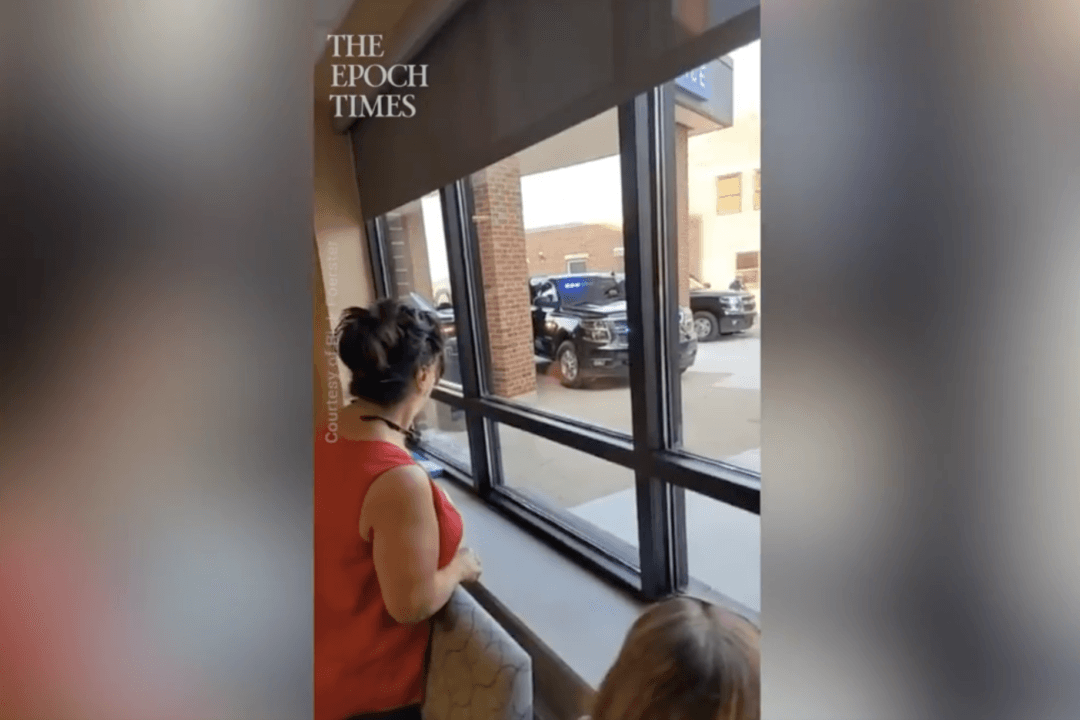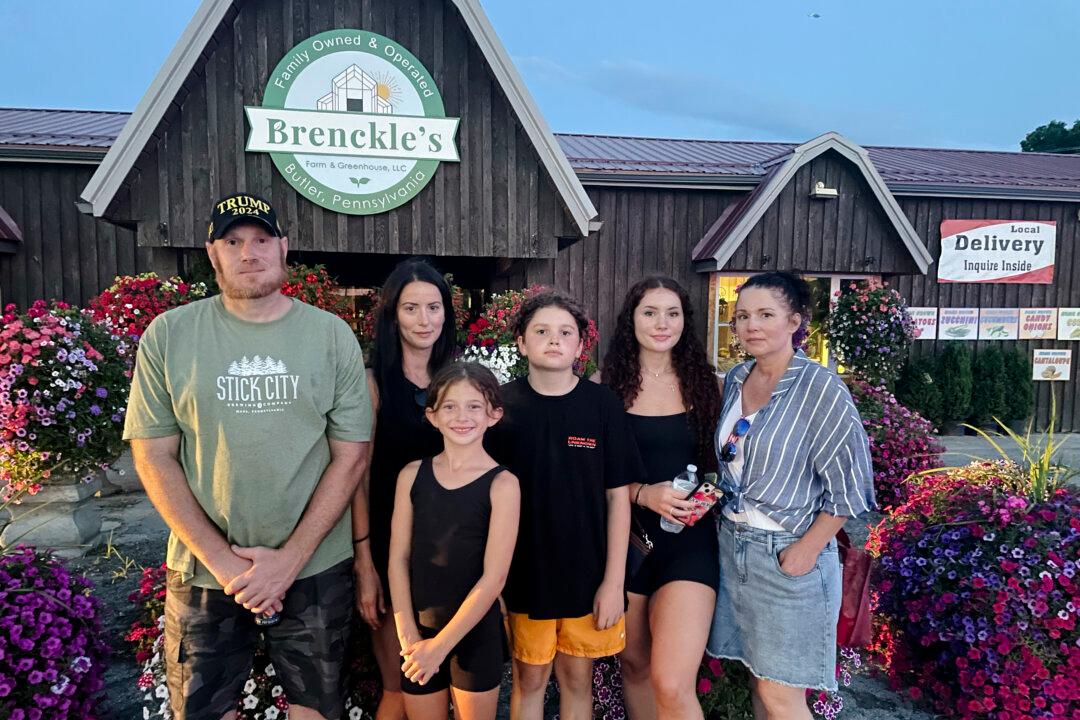In Goodhue, Minnesota, population 1,252, the entire police force is quitting as of Aug. 24. All have found jobs in surrounding police departments that offer higher pay; that includes Goodhue Police Chief Josh Smith, one full-time officer, and five part-time officers.
Mr. Smith didn’t respond to a request for comment, but in a recent city council meeting, he indicated that the pay offered by the city is too low to attract new employees. A new officer with police training but no job experience would have been offered $22 per hour, but the city is reevaluating the rate.
It’s currently budget season in Minnesota, and the city is working with the county to see what it can offer future officers, a Goodhue Town Hall employee who wouldn’t give her name told The Epoch Times. Goodhue is currently seeking a new chief and two full-time officers, she said, and the county sheriff’s department is handling law enforcement, so the town isn’t without police coverage.
Across Minnesota, there are 202 openings for police officers, according to statements made by Goodhue officials at a special meeting held on Aug. 14 to address the police situation.
Goodhue is located 57 miles south of the scene of George Floyd’s death while in the custody of Minneapolis police that sparked riots in the summer of 2020 and magnified the Black Lives Matter call to “defund the police.”
But small, local police and sheriff departments, which make up a majority of U.S. law enforcement agencies, were already struggling financially. Law enforcement is often the largest slice of the pie in small-town budgets. Boroughs, villages, townships, parishes, and tribes must balance public safety with other vital services such as road and park maintenance. Fire departments are often staffed by volunteers in small towns but supplemented by local tax dollars.
The smaller the tax base, the more challenging it is to meet all the financial demands.
“We’re all seeing a reduced number of candidates in the last five years,” Fulton County, New York Sheriff Richard Giardino told The Epoch Times. “A lot of it is the defund police movement—some of the national movements that make villains out of all police officers. The police are now the only profession in this country that you’re presumed guilty until you can prove your innocence. Anyone else arrested is presumed innocent until the government can prove you’re guilty.
“So, we face a lot of challenges. And at the same time, I do think we’re making progress. Right now, our legislative body realizes that were are short-staffed, and they’re starting to hear complaints from their constituents.”
Mostly Small and Rural Law
Small agencies often struggle with recruiting and retaining officers because of lower pay, fewer benefits, and fewer opportunities for advancement than are offered at larger agencies.“We don’t have the funding to compete with larger organizations,” Vanessa Crawford, sheriff of Petersburg, Virginia, told The Epoch Times. “A lot of grants require matching funds, and we don’t have matching funds.”
Petersburg has a population of 33,400. Ms. Crawford is also an SRLEEA board member.
The SRLEEA website states that although many Americans see law enforcement agencies as big organizations with large numbers of officers and top-notch modern equipment, nearly half of all local law enforcement agencies in the United States have fewer than 10 sworn officers. And more than 90 percent of local law enforcement agencies employ fewer than 50 sworn officers or deputies and serve populations of fewer than 50,000 people.
“Something that we have noticed is a lot of the grants that have come out of the Department of Justice were very difficult to apply for,” Adam Salyards, a member of the SRLEEA Board of Governors and the police chief of Spring Township, Pennsylvania, told The Epoch Times. “I’m a small department. I don’t have the resources to hire grant writers to write the grants for us. I’ve taken on the challenge of some of these grants, and I won’t say they’re impossible, but they’re pretty difficult for a working chief to try to write a grant to get extra funding for their municipality. It’s something that I think the Bureau of Justice Assistance Office has listened to us over the past year or two years and have started talking about ways that they can start to break down those barriers.”
Since organizing in 2019, SRLEEA has gained 7,000 members. Now the federal government is responding to rural departments as a larger group.
High Turnover
Often, police officers fresh out of a police academy start in a small or rural agency, and once they have some experience under their belt, they move on to higher pay.“We spend a lot of money and time training entry-level police and deputy sheriffs,” Mr. Giardino said.
His county has 500 square miles, a population of 55,000, and two larger cities.
“It’s a constant turnover for us in a small department because if one of my sergeants leaves here, he’s making $61,000 or $60,000 as a sergeant with me; he can go to one of the cities in the county and he can be making $80,000,” Mr. Giardino said.
Also, one city in his county offers a $7,500 bonus to police officers who don’t take the health insurance package. His department can’t compete with that.
In one California county, a day care center located near the department and funded by local businesses may be used by law enforcement, ambulance, or corrections workers.
“We just don’t have the resources, either locally or in government tax base, to do what other agencies can do,” Mr. Giardino said.
Beyond compensation, small and rural departments with low staff have extra safety challenges.
Different Problems
In Spring Township, the police got a grant to buy body cameras five or six years ago, but now they’re outdated and starting to die.“We love them. Problem is, I’m looking at $110,000–$115,000 to replace all the cameras for my cars and my officers. That’s 15 percent of my annual budget,” Mr. Salyards said. “This past week, I had a car that blew an engine, so now I need an extra $60,000 to replace the car. That wasn’t in my budget for this year. Those are the things where I think small agencies have challenges where maybe the large ones don’t as much.”
When something happens in a larger city, three or four police cars may respond. In rural areas, officers usually respond alone and call for backup as needed.
When one officer in a small department leaves, it means fewer police on duty and, in some cases, no police coverage at certain times.
And crime is changing in rural areas.
“Our small rural communities aren’t like they used to be. You have organized crime now that is setting up in these small and rural communities because they know they’re not going to be noticed,” Mr. Thompson said. “Look at the problem we’re having with human trafficking—sex trafficking. They are going out and snatching little girls off migrant farms, and the parents don’t report it because they’re afraid they are going to get deported. And then when they find the girl after she has been in the sex trade for years, she has no family because they’ve gone back to wherever they came from.”
Drug dealers were using a one-pot method five to eight years ago to cook meth locally but not anymore, according to Mr. Salyards.
“Now that has changed for us to the point that meth has now become so prevalent because of gangs and the cartel bringing it into the United States. ... It is so cheap that it’s easier for them to go out and purchase methamphetamine in our communities than it is to make their own,” he said.
Small, rural, and tribal law enforcement agencies face many of the same problems as larger cities, such as drugs, suicides, and domestic violence, but they’re less equipped to deal with them.
“It’s important to note that 90 percent of law enforcement agencies in the country have 50 or less law enforcement officers, and we serve the vast majority of people in this country. People don’t know that,” Mr. Giardino said. “We’re all stretched pretty thin.”







